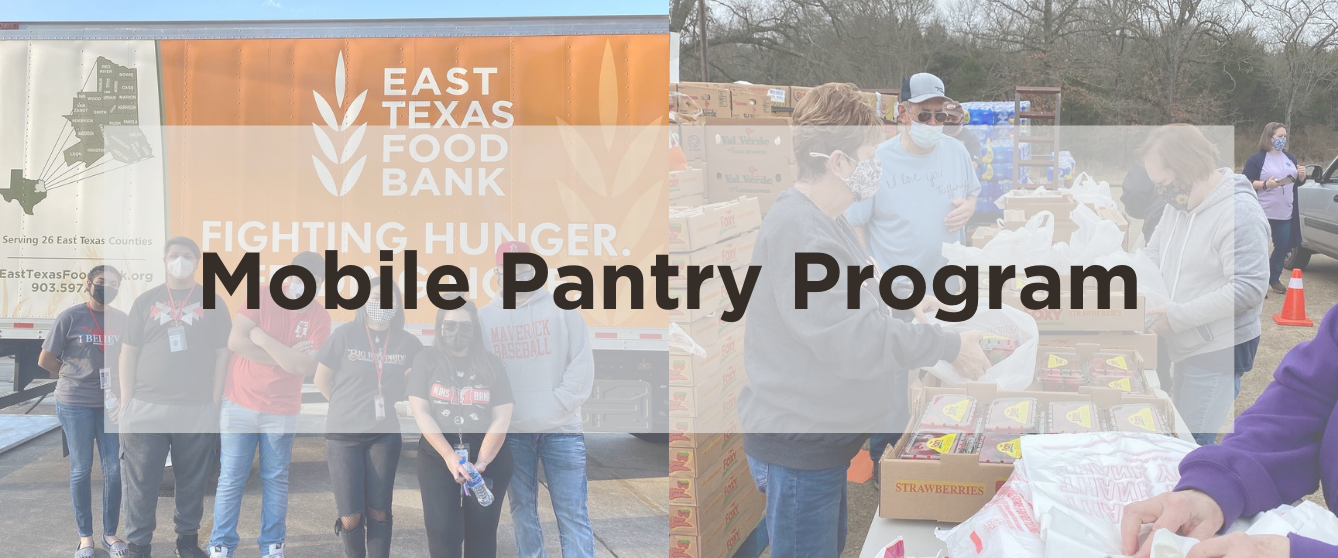New Mobile Pantry Program brings produce to underserved locations

The East Texas Food Bank’s new Mobile Pantry Program targets isolated communities with little or no access to emergency food resources throughout our 26 county service area. Communities are determined by using census data that indicates where the highest level of poverty are located.
“We work with our current partners and have community partners that help us facilitate the mobile pantry,” said Tabitha Johnson ETFB Mobile Pantry Coordinator. “It’s a ‘pop-up style’ event where we come on-site then leave when distribution is over.”
The Mobile Pantry Program currently has 10 sites where fresh produce is being distributed to families. Because the program is truly “mobile”, it allows flexibility in location.
“A typical food bank partner pantry is a brick and mortar building,” Johnson said. “A benefit with this program is we can serve a low-income housing development or a larger population in a church parking lot like we do in Texarkana.”
As many as 500 families have been served during one of the recent distributions, but an average of 200-300 household is more common.
“I think the need is so great right now due to the pandemic,” Johnson said.
The community response to the mobile pantry distributions has been good, according to Johnson. She said those who are served are so grateful.
“When we opened the Marshall site recently, we were able to take water and produce because of the need with having the boil water notice there,” Johnson said. “A lady tried to climb out of the car and give me a hug because she was so excited because they hadn’t had water in days and the food was such a blessing to them.”
There are no income or geographic requirements to participate in the Mobile Pantry Program. For more information and locations on the program, click here. If you are interested in being being a partner and hosting a Mobile Pantry location, click here.


